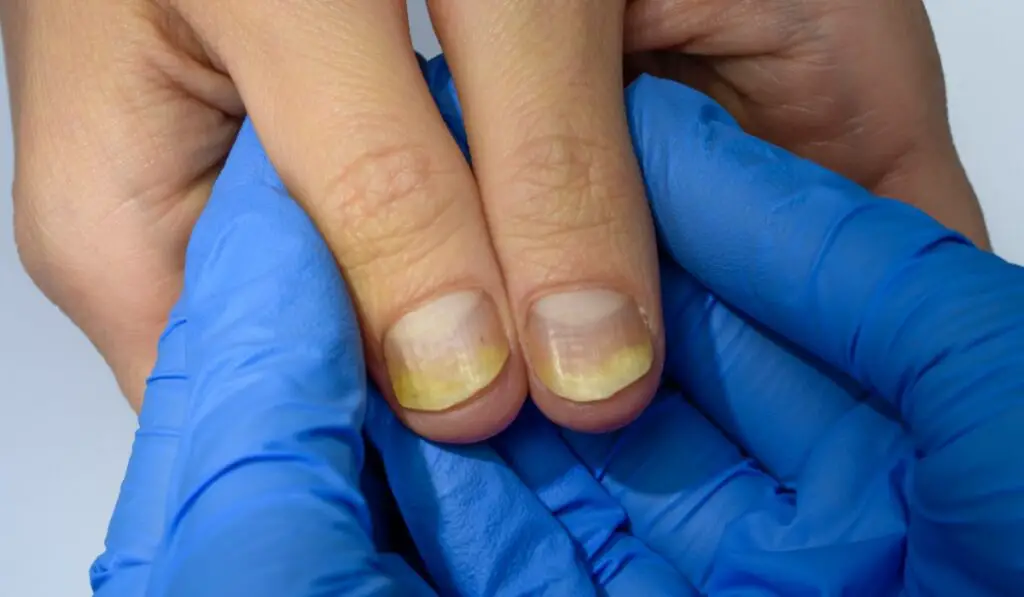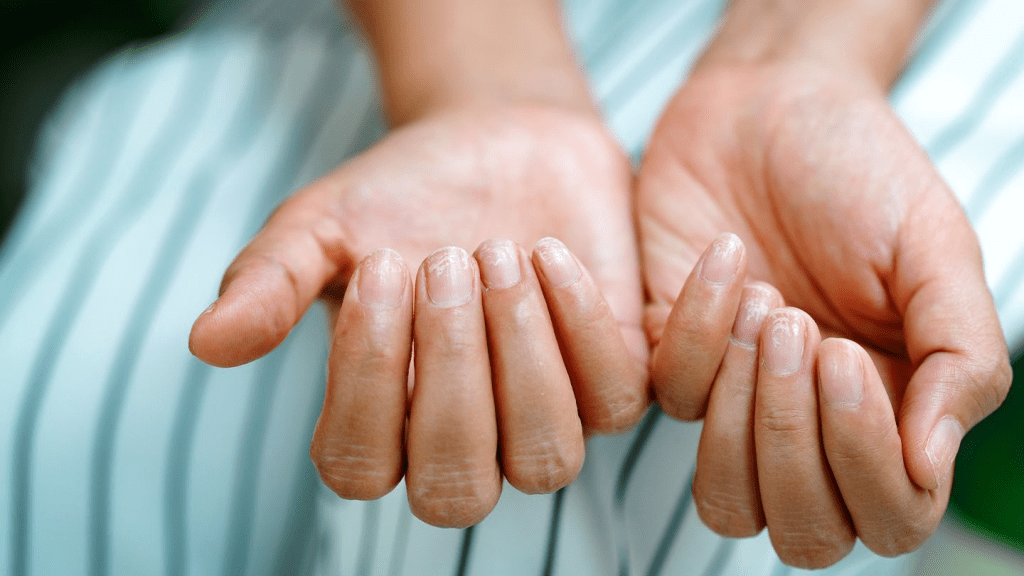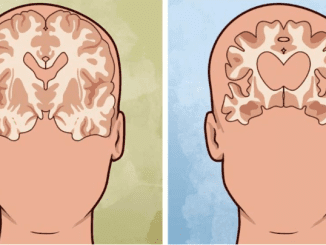Nails can reveal a surprising amount about a person’s overall health. While we often think of changes in nail color or shape as minor or purely cosmetic, these signs may actually point to underlying health conditions. From heart disease to nutritional deficiencies, your nails can provide crucial health clues if you know what to look for. Here, we dive into seven nail abnormalities that may indicate more serious health issues, according to health experts.
1. Beau’s Lines: Grooves Signaling Health Disturbances

Have you noticed deep grooves or lines running horizontally across your nails? These are known as Beau’s lines, and they occur when nail growth is temporarily disrupted. According to Dr. Bhavini Shah from Lloyds Pharmacy, Beau’s lines often develop after severe illness, injury, or major stress on the body, such as a high fever or infection. For example, some people have developed these lines following a COVID-19 infection.
These lines are generally harmless and may disappear as the nail grows, but if they keep appearing or are accompanied by other symptoms, it’s wise to consult a doctor. Persistent Beau’s lines could indicate ongoing health issues that need medical attention.
2. Clubbing: A Sign of Possible Heart or Lung Issues
Clubbing is a condition where the fingertips become enlarged and the nails curve around the fingertips. This change occurs gradually, often going unnoticed until the nails take on a bulbous appearance. Dr. Shah explains that clubbing can be a red flag for serious conditions, such as heart disease or lung issues.
Clubbing might also coincide with other symptoms like fatigue, swollen ankles, or shortness of breath. While clubbing can be a natural feature for some, if it appears suddenly or progresses, it’s essential to see a healthcare provider to check for potential underlying conditions.
3. Spoon Nails: A Clue to Iron Deficiency
If your nails appear to curve inward, resembling tiny spoons, you may have a condition known as koilonychia or spoon nails. Dr. Shah suggests that this could be a sign of iron-deficiency anemia. This condition is common after pregnancy or in people with poor nutrition, digestive issues, or conditions that impact nutrient absorption.
Other symptoms of iron deficiency include fatigue, pale skin, shortness of breath, and headaches. Fortunately, anemia is usually treatable with iron-rich foods and supplements. If you suspect you have iron deficiency, a simple blood test can confirm the diagnosis and help you get back on track with proper treatment.
4. Pitting or Denting: Linked to Skin Disorders

Small pits or dents on the surface of your nails may be linked to skin disorders such as psoriasis, eczema, or alopecia areata. Dr. Shah explains that these conditions often come with other visible symptoms, such as scaly patches (in psoriasis) or dry, cracked skin (in eczema).
While nail pitting doesn’t usually cause discomfort on its own, it can be distressing. Dermatologists may recommend treatments like corticosteroids or vitamin D3 supplements to help manage the underlying condition, which can, in turn, reduce nail pitting over time.
5. Dark Streaks on Nails: Potential Warning Sign for Melanoma

We’re often vigilant about unusual moles on our skin, but did you know that melanoma can also appear under your nails? A dark streak running vertically down the nail could be a sign of melanoma, the most dangerous type of skin cancer. Dr. Shah advises that while not all dark lines are cancerous, it’s essential to have any unusual discoloration examined by a dermatologist.
Early detection of melanoma is crucial, as it is more treatable in the initial stages. If you spot a dark line under your nail, especially if it changes over time or appears suddenly, book an appointment with a doctor to ensure it’s nothing serious.
6. Terry’s Nails: A Tell-Tale Sign of Liver Disease

Named after the doctor who identified it, Terry’s nails is a condition where the nail bed turns white with a pink or reddish strip at the tip. According to Dr. Shah, this appearance may indicate liver disease or other conditions, including diabetes and heart disease. Other symptoms associated with liver disease include yellowing of the skin, fatigue, and loss of appetite.
Terry’s nails can also be part of the natural aging process, but if you notice this change along with other symptoms, it’s worth consulting a healthcare provider for a comprehensive evaluation.
7. Yellow Nails: Often a Sign of Fungal Infection, But Can Signal More

Yellowing of the nails is commonly associated with fungal infections that cause the nails to thicken, become brittle, and, in some cases, separate from the nail bed. While fungal infections are usually treatable with antifungal medications, yellow nails can occasionally point to more serious issues.
In rare cases, yellow nails may signal diabetes, thyroid problems, lung disease, or psoriasis. If you notice persistent yellowing of your nails that doesn’t improve with basic treatments, a doctor’s visit can help determine if there’s an underlying health condition at play.
When to Consult a Doctor for Nail Health Concerns
While nail abnormalities can be an indicator of various health conditions, they are not always a cause for alarm. Minor changes in nail color, texture, or strength can result from external factors like nail polish use, frequent washing, or even aging. Dr. Sara Norris, a naturopathic doctor, points out that most nail health issues stem from nutritional deficiencies or poor digestion rather than severe illnesses.
However, if you’re experiencing persistent nail changes alongside symptoms like fatigue, swelling, chest pain, or weight loss, it’s essential to consult a healthcare provider. A doctor can perform tests to determine whether your nail changes are part of a broader health issue.
The Role of Nutrition in Maintaining Healthy Nails

For many people, nail health is closely tied to dietary intake. Nails need a variety of vitamins and minerals to grow strong, including biotin, zinc, and iron. If you notice that your nails are brittle, peeling, or showing signs of discoloration, consider reviewing your diet. Incorporating foods rich in essential nutrients, like leafy greens, nuts, and lean proteins, can help improve your nails’ appearance and strength over time.
If dietary changes don’t improve nail health, supplements might be an option, but it’s important to consult a healthcare provider before starting any new regimen.
Conclusion: Your Nails May Be Telling You More Than You Think
Our nails are more than just a cosmetic feature; they offer a window into our health. From Beau’s lines to Terry’s nails, various nail conditions can serve as early indicators of underlying health issues. While it’s easy to dismiss these changes as unimportant, paying attention to them can lead to early diagnosis and timely treatment of potential health concerns.
If you spot unusual changes in your nails that persist or worsen, it’s always a good idea to seek professional advice. A simple examination can help determine if there’s a larger issue at play or if you simply need a few adjustments in your daily routine. By keeping an eye on your nails, you can stay proactive about your health and ensure you’re taking steps toward overall wellness.


